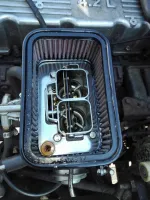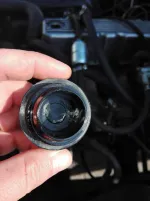Carburetor question
Scout1067
Old Time Jeeper
I have a AMC 258 i6 / 4.2l with a Weber 32/36 DEGV that the PO put on it with a K&N square breather. The last time I had a vehicle with a carbureted engine was in High School many moons ago (a POS 85 Cougar) so I am scraping memory and have been quizzing the hell out of my Dad to try and figure this out.
Two things really.
1. When I start the engine I always have to pump the hell out of it and rev it a few times before it settles in it idles at 850-900 rpm cold. The engine also runs rough cold but as soon as it hits operating temperature it smooths out and idles around 1000 rpm. I have looked and it seems to be choking ok. I adjusted the mixture and idle according to the instructions I found on the Redline website since I got a title from the PO and nothing else.
I can't find a manual for the carb at all and I am not really convinced it is a carb issue.
2. The second thing I find more concerning. When I open up the breather there is foamy, creamy looking oil in it. It gets so much oil that it is starting to soak through the air filter and I cant for the life of me figure out where that oil would be coming from.
Any help pointing me in the right troubleshooting direction is greatly appreciated. I am beginning to think the two issues are related but don't know how.
Two things really.
1. When I start the engine I always have to pump the hell out of it and rev it a few times before it settles in it idles at 850-900 rpm cold. The engine also runs rough cold but as soon as it hits operating temperature it smooths out and idles around 1000 rpm. I have looked and it seems to be choking ok. I adjusted the mixture and idle according to the instructions I found on the Redline website since I got a title from the PO and nothing else.
I can't find a manual for the carb at all and I am not really convinced it is a carb issue.
2. The second thing I find more concerning. When I open up the breather there is foamy, creamy looking oil in it. It gets so much oil that it is starting to soak through the air filter and I cant for the life of me figure out where that oil would be coming from.
Any help pointing me in the right troubleshooting direction is greatly appreciated. I am beginning to think the two issues are related but don't know how.

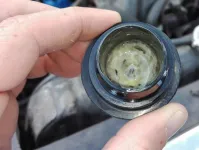
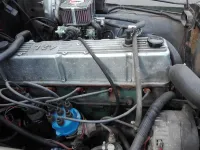
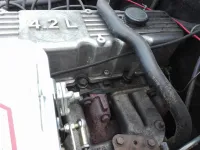
 My mistake
My mistake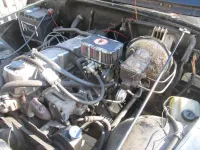
 ), or after market.
), or after market.